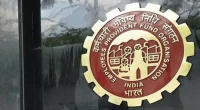Tax-saver fixed deposits (FDs) allow depositors to claim a tax deduction under Section 80C of the Income-tax Act (ITA), 1961. Such deposits can be made via two types of accounts: single-holder and joint-holder type deposits.
In case one opts for a joint-holder type of deposit, the tax benefit is available to the first holder alone. The tenure of the tax-saver FD is five years. A deduction under Section 80C is allowed to the Hindu Undivided Family (HUF) and individuals, including senior citizens and Non-Resident Indians (NRIs).
It is important to note that the interest one earns from this fixed FD is not tax deductible. Also, it is not possible for an individual to avail of a loan against it. The interest on tax-saver FD can either be reinvested or receivable on a quarterly basis.
An individual has the choice of either opting for a public or a private sector bank to create a tax-saver FD. However, one cannot do so in rural or co-operative banks.
Generally, banks tend to provide a higher interest rate to senior citizens on the tax-saver FDs. Mutual funds, which are tax-saving, are referred to as Equity-Linked Saving Schemes (ELSS).
On the other hand, with the sweep-in facility in an FD, an investor is allowed to transfer their excess funds in the bank account to their FD account, thus providing an opportunity to earn higher returns.
The maturity period of the auto sweep-in FD could range from one-five years, as per the bank.
Investors are required to inform the amount that they wish to hold in their savings account and current account, while the rest will be auto-transferred to the sweep-in FD account. This way, an investor can earn higher returns on their surplus money, and it also provides them with an option to dig into the FD to address any financial emergency.
It is possible to draw funds from the FD without levying any fees or penalties to address any short-term financial concerns.
While both tax-saver FD and sweep-in FD schemes allow an investor to earn interest and save on tax, they are quite different in terms of features and benefits. An investor should undertake due diligence before opting for any of these two FD schemes.

Rajiv is an independent editorial consultant for the last decade. Prior to this, he worked as a full-time journalist associated with various prominent print media houses. In his spare time, he loves to paint on canvas.





